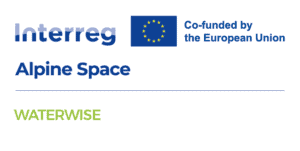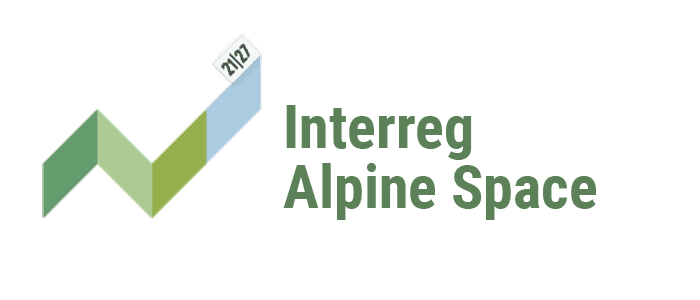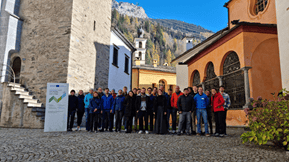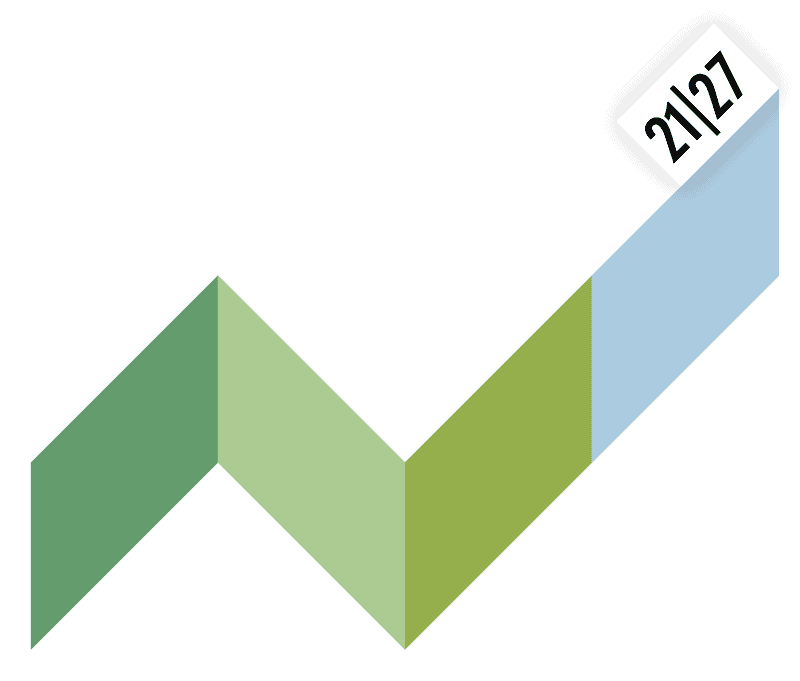
December 4, 2024 Press Release
November 12-14, Poschiavo (Switzerland)
Launch of the Waterwise Project
An international partnership to tackle climate change in the Alpine region
Glaciers melting, heatwaves, and changes in precipitation: multiple threats to Alpine water resources
Energy production, agriculture, industry, tourism: managing catchments threatened by climate change becomes strategic and transnational
Climate change knows no borders: its consequences affect everyone, regardless of the lines drawn on a map, as these impacts often manifest far from where the problems originate. Addressing it requires international cooperation involving researchers, policymakers, communities, and local administrators. This is the goal of Waterwise, a project co-funded by the European Union through the Interreg – Alpine Space program, which brings together twelve partners from six Alpine countries: France, Italy, Switzerland, Germany, Austria, and Slovenia.
Managing water resources in the Alpine region starts upstream—with glacier and snowmelt and changes in precipitation — and reaches downstream, where water scarcity impacts the socioeconomic structures of settlements that may span one or more nations. A case in point is the spring in Val d’Ursé, Switzerland, which feeds watercourses that flow into the Adda and Po Rivers, playing a crucial role in the economy and society of Northern Italy. These data should be understood within a broader context: between 2005 and 2018, the Nördlicher Schneeferner and Höllentalferner glaciers in Germany lost approximately half and one-third of their ice mass, respectively; France’s third-largest glacier, Tré-la-Tête, lost the water equivalent of 6,000 Olympic swimming pools between 2014 and 2016, and similarly, in Austria’s Jamtal Valley, glacier melt is accelerating. Here, nearby Galtür meteorological station has recorded a mean temperature rise of about 2°C compared to the period 1961-1990.
The melting of glaciers and the reduction of snowcover are among the most evident effects of climate changes which are threatening mountain springs and Alpine aquifers. Heatwaves, droughts, and changes in precipitation also have significant impacts. These disruptions of natural cycles harm biodiversity—for example, the Grande Sassière basin in France hosts 20 rare plant species that depend on streams and wetlands—and affect the quality and quantity of water available for public and private use in Alpine communities. In Trentino-Alto Adige, the municipality of Ziano di Fiemme relies on the Sadole spring, fed by a rock glacier (a mountain landform made of rock debris and interstitial ice) in the upper Val Sadole. Similarly, Mount Peca, on the Austria-Slovenia border, provides groundwater essential for surrounding municipalities, not only for private consumption but also for hydropower generation. Managing water basins is becoming increasingly strategic at a political level, as water is central to key economic sectors of the Alpine and Perialpine regions: energy production, agriculture, industry, tourism.
Waterwise aims to support local administrators, protected area managers, and Alpine communities in co-designing long-term strategies to enhance these regions’ resilience, particularly regarding their water resources, dealing with climate change. This and much more was discussed by the representatives of the international, multidisciplinary team at the project’s kickoff meeting, held in Poschiavo, Switzerland, from November 12 to 14.
“Projects like Waterwise are essential because they address the urgent and universal problem of climate change through tools like cooperation and innovation,” says Clément Roques, the project’s scientific coordinator, senior researcher, and lecturer at the Centre for Hydrogeology and Geothermics (CHYN) at the University of Neuchâtel, the project’s lead partner. “To effectively combat this issue, transnational cooperation among stakeholders, policymakers, and administrators is crucial. Waterwise exemplifies this collaborative approach by bringing together diverse expertise and perspectives to develop a guide for sustainable water and land management.”, says Monica Tolotti, researcher of the Group Hydrobiology of the Edmund Mach Foundation, administrative lead partner of project.
Starting from this very first kickoff meeting, Waterwise has prioritized building networks and fostering dialogue with local institutions to establish solid foundations for future strategies. Representative from local, national and international representatives such as Cassiano Luminati, director of the Polo Poschiavo, Alexis Truchet, from the Alpine Space Joint Secretariat, and Silvia Jost and Alexis Kessler from the Swiss Federal Office for Spatial Development (ARE), participated in the meeting for this very reason.
The project’s expected outcome is an innovative digital toolbox—a set of tools developed through a series of workshops held across various regions. This toolbox will serve as a practical guide that can be applied elsewhere to enhance the resilience of Alpine communities, their water resources, and biodiversity. The identified pilot areas where the toolbox will be developed, tested, and validated include the Contamines Montjoie and Grande Sassière (France), the Jamtal Valley (Austria), Rèchy (Switzerland), Sadole (Italy), Schneefernerhaus in Zugspitze (Germany), and the transboundary aquifer of Mount Peca/Petzen (Austria/Slovenia). However, many more areas will serve as testing grounds for the toolbox’s implementation to evaluate its applicability across diverse Alpine environments.
Waterwise Press Office
Elisa Leo (Legambiente Piemonte e Valle d’Aosta)
+39 3474066702
e.leo@legambiente.it
Waterwise is co-funded by the European Union through the Interreg – Alpine Space program, involving 12 partners: the University of Neuchâtel (scientific lead), Edmund Mach Foundation (administrative lead, ITA), Réserves naturelles de France (FRA), Legambiente Piemonte e Valle d’Aosta (ITA), EGTC Geopark Karawanken (AUT/SLO), University of Passau (GER), Geological Survey of Slovenia (SLO), Tetraktys (FRA), Karlsruhe University of Applied Science (GER), Alpinarium Galtür Dokumentation Ltd (AUT), Regional Environmental Protection Agency of Lombardy (ARPA, ITA), and the Center for Research in Alpine Environment (CH).



